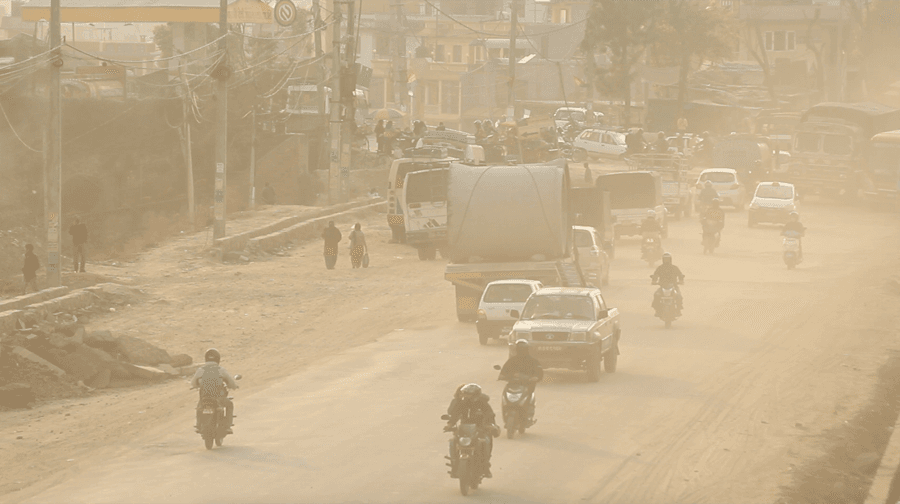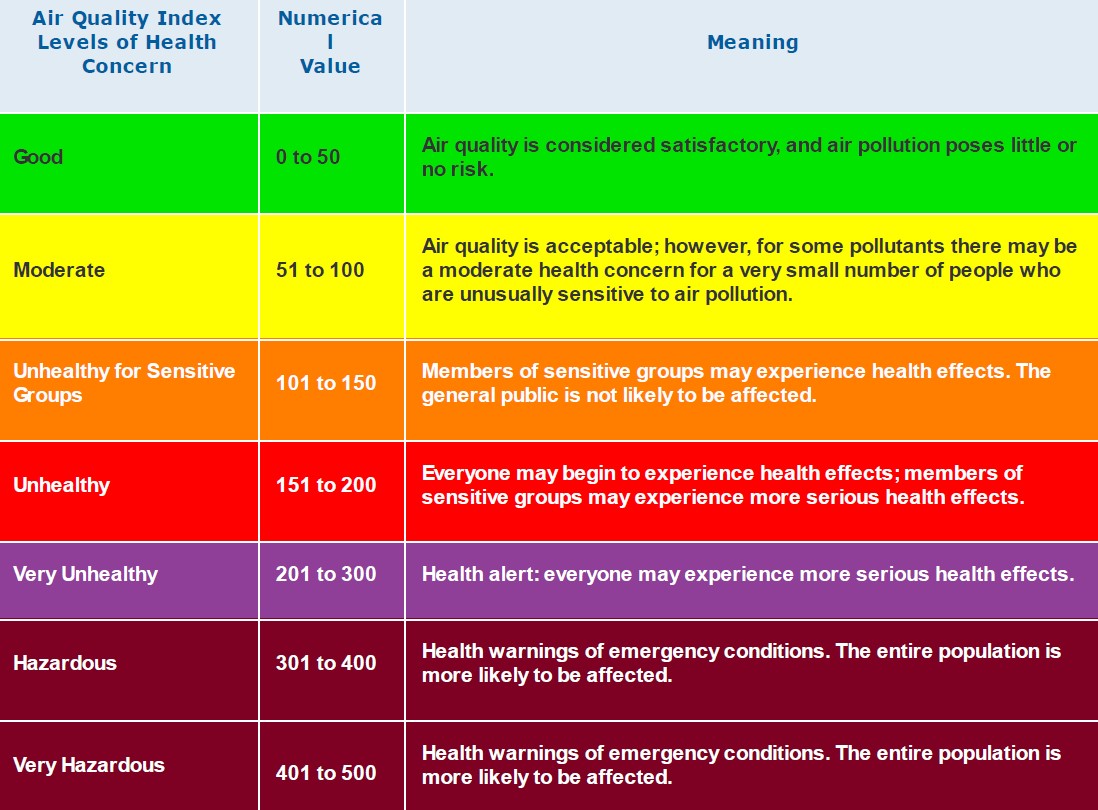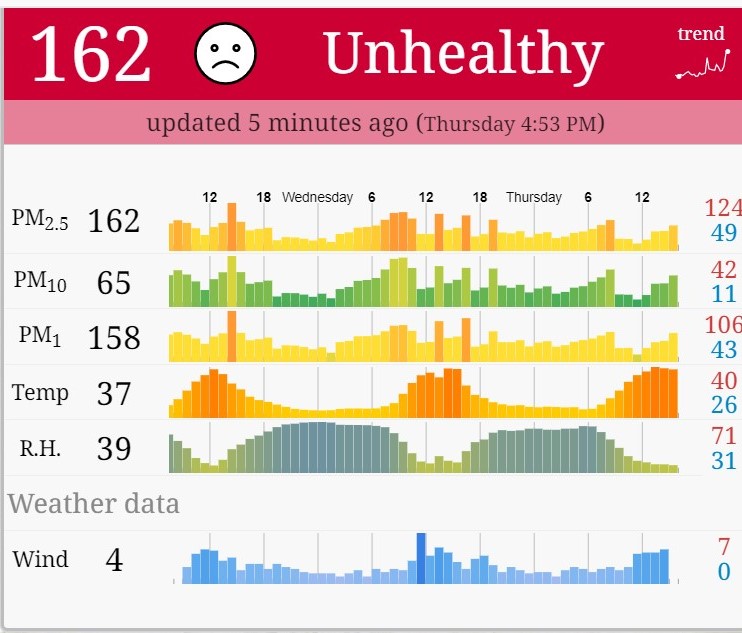Life & Health

Nepal’s air quality ranks among the worst in the world, and that’s taking a heavy toll on public health – with deaths resulting from lung disease sharply going up.
Indoor and outdoor air pollution levels have become so alarming that the country now has the world’s highest age-adjusted death rate for chronic lung disease with 182.5 per 100,000 population, according to a new international study.
Owing to the condition caused by air pollution, more than 3,000 years were lost to ill health or disability, according to the study.
Nearly all cases of chronic obstructive pulmonary disease (COPD) are environmental in origin, Scidev.Net quoted Jay Kaufman, an author of the study and professor at the Department of Epidemiology, Biostatistics and Occupational Health at McGill University, Montreal, Canada, as saying.
The study notes Nepal’s rapid urbanisation, which caused a sharp increase in the number of vehicles from nearly 224,000 in 1990 to 1.3 million in 2012. Even so, it says, “the country has failed to effectively regulate air pollutants and implement air quality control measures”.
Chronic obstructive pulmonary disease is considered a systemic disease and is more common in individuals with a history of tobacco smoking. A wide range of comorbidities and risk factors are associated with the disease, including genetics, smoking, infections, malnutrition, ageing, occupational exposures, indoor and outdoor air pollutants, asthma, and low socioeconomic status, according to the researchers.
The study used data from the Global Burden of Disease 2019 study to evaluate the burden of respiratory diseases attributable to pollution from ambient particulate matter.
A 2019 study conducted by Nepal Health Research Council (NHRC) revealed that COPD was responsible for 16.3 per cent of total deaths, an increase from 6.1 per cent of total deaths in 1990.
Causes of chronic lung diseases
The causes of COPD are smoking - both first hand and second hand - indoor air pollution caused by biomass fuel and outdoor air pollution.
“Construction of chimneys in kitchens, avoiding smoking and an early testing will help people from the severity of the disease,” said Dr Kamal Raj Thapa, senior consultant at Chest Department, Bir Hospital.
Children, the elderly and low-income people are more vulnerable to lung diseases.
The most health-harmful pollutants closely associated with excessive premature mortality are fine PM 2.5 particles that penetrate deep into lung passageways, the World Health Organisation says.
Particulate matter is the term for particles found in the air, including dust, dirt, soot, smoke, and liquid droplets. Large concentrations of particulate matter are typically emitted by sources such as diesel vehicles and coal-fired power plants.
How polluted Nepal is
Nepal ranked tenth globally among countries which had the worst air quality in 2021. The tiny nation of nearly 30 million ranked amongst the big population centres like India, China, and Bangladesh.
In Nepal, the air in the urban centres like Kathmandu valley and other industrial hubs in Tarai like Siddharthanagar, Birgunj, and Dang has the most polluted air.
Nepal's average Air Quality Index (AQI) was 126 last year, according to IQAir, the world's largest free real-time air quality information platform, and the average particulate matter (PM) 2.5 level is 9.2 times the WHO annual air quality guideline value, which is 10 µg/m3.
AQI and PM 2.5
The AQI is a scale ranging from zero to 500 that accounts for the five different pollutants in the air including ground-level ozone, particle pollution, carbon monoxide, sulphur dioxide, and nitrogen dioxide.
The “higher the AQI value”, the “greater the level of air pollution” and the “greater the health concern”.
A score below 100 is generally regarded as satisfactory and anything north of the 100 mark means unhealthy, reaching unhealthy as the score climbs to the 300 mark.

The US Centres for Disease Control and Prevention (CDC) defines particulate matter as tiny solid or liquid particles in the air which includes dust, dirt, soot, smoke and drops of liquid.
And PM 2.5 means particles that are smaller than 2.5 microns in width. For comparison, human hair is about 70 microns thick. These tiny particles are even more potent concerns of health issues.
New York’s Department of Health says exposure to PM 2.5 can cause short-term health issues like eye, nose, throat and lung irritation, coughing, sneezing, runny nose and shortness of breath, to chronic health complications like asthma and heart diseases.
The air quality in Nepal often reaches hazardous levels in the winter months – from November to February.
On January 5, 2021, the AQI was reported to be 480 which is well above even in the very hazardous range. The sudden rise in pollution has to do with forest fires in remote hills of Nepal, lighting farms in fires after the harvest in Tarai and in India, which gets exacerbated by the winter weather that forms smog.

People in the bowl-shaped Kathmandu valley which traps the thick smog report of burning sensations in the eyes and hospitals get filled with patients with throat problems. Not to mention, hundreds of flights getting cancelled due to poor visibility.
“The government must come up with proper policies to restrict people smoking in public areas and make policies to prevent air pollution. It should properly be done by the three tier government,” added Dr Thapa.
Measures to prevent air pollution
Using smart energy sources for transport
Keeping industries away from residential areas
Planting trees
Managing construction sites
Wearing masks
WHO on COPD
Chronic obstructive pulmonary disease (COPD) is the third leading cause of death worldwide, causing 3.23 million deaths in 2019.
Nearly 90 per cent of COPD deaths in those under 70 years of age occur in low- and middle-income countries.
Early diagnosis and treatment, including smoking cessation support, is needed to slow the progression of symptoms and reduce flare-ups.
Environmental exposure to tobacco smoke, indoor air pollution and occupational dust, fumes and chemicals are important risk factors for COPD.
COPD results from long-term exposure to harmful gases and particles combined with individual factors, including events which influence lung growth in childhood and genetics.
COPD causes persistent and progressive respiratory symptoms, including difficulty in breathing, cough and phlegm production.
Diwash Ghimire contributed reporting.

_11zon1681280198.jpg)




